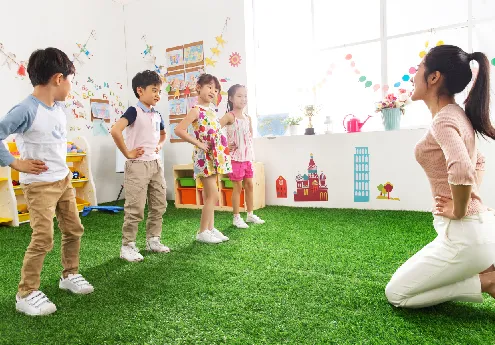
- Afrikaans
- Arabic
- Belarusian
- Bengali
- Czech
- Danish
- Dutch
- English
- Esperanto
- Estonian
- Finnish
- French
- German
- Greek
- Hindi
- Hungarian
- Icelandic
- Indonesian
- irish
- Italian
- Japanese
- kazakh
- Rwandese
- Korean
- Kyrgyz
- Lao
- Latin
- Latvian
- Malay
- Mongolian
- Myanmar
- Norwegian
- Persian
- Polish
- Portuguese
- Romanian
- Russian
- Serbian
- Spanish
- Swedish
- Tagalog
- Tajik
- Thai
- Turkish
- Turkmen
- Ukrainian
- Urdu
- Uighur
- Uzbek
- Vietnamese
artificial grass for sports
Nov . 12, 2024 15:59 Back to list
The Evolution and Benefits of Artificial Grass for Sports
Artificial grass, often referred to as synthetic turf, has seen significant advancements since its introduction in the 1960s. Originally developed for use in sports venues, artificial grass has become a go-to choice for various sports fields due to its unique advantages and versatility. As sports continue to evolve and the demands of athletes rise, synthetic turf emerges as a solution that meets the needs of players, coaches, and facility managers alike.
One of the most compelling benefits of artificial grass for sports is its durability. Traditional grass fields require extensive maintenance, including regular mowing, watering, and fertilization. In contrast, synthetic turf is designed to withstand heavy use without significant wear and tear. This makes artificial grass especially appealing for sports that involve frequent practices and games, such as soccer, football, and lacrosse. Facilities can accommodate more events without the worry of damaging the playing surface, allowing for better utilization of resources.
Moreover, artificial grass provides a consistent playing surface year-round. Natural grass fields can be affected by weather conditions, leading to muddy, uneven, or unsafe playing environments. On the other hand, synthetic turf is engineered to drain effectively, reducing the risk of water accumulation and muddy patches. This ensures that athletes can practice and compete in optimal conditions regardless of rainfall or temperature fluctuations. Facilities can maintain a reliable playing surface that promotes safety and performance, giving players the best chance to excel.
Another significant advantage of artificial grass is its low maintenance requirements. While natural grass demands regular care to remain in good condition, synthetic turf needs minimal upkeep. Routine procedures typically involve brushing the fibers to keep them upright and removing debris. This not only saves time but also reduces costs associated with maintenance labor and equipment. For sports organizations, this translates to more resources available for player development and other priorities rather than on-field upkeep.
artificial grass for sports

In terms of player performance, artificial grass has evolved to closely mimic the feel of natural grass, making the transition from one surface to another smoother for athletes. Modern synthetic turf systems incorporate advanced technologies, including improved shock absorption properties and realistic textures, which enhance player comfort and safety. This is particularly important in preventing injuries, as modern turfs are designed to provide better traction and reduce the risk of slips and falls.
Environmentally, synthetic turf offers various benefits that align with contemporary sustainability practices. Water conservation is a significant concern in many regions, and synthetic grass eliminates the need for irrigation. Additionally, it reduces pesticide and fertilizer usage, minimizing chemical runoff and its negative effects on local ecosystems. By choosing artificial grass, sports facilities can contribute to a greener planet while still providing high-quality playing surfaces.
With its myriad benefits, it is clear why artificial grass for sports has gained immense popularity among schools, professional teams, and community organizations. As technology continues to advance, synthetic turf systems will likely become even more sophisticated, providing further enhancements in safety, playability, and environmental sustainability. This evolution reflects the ongoing commitment to athlete welfare and performance at all levels of sport.
As we look to the future, the integration of artificial grass into the sports industry represents a pivotal shift towards more sustainable and efficient practices. Whether in a local community field or a major league stadium, synthetic turf is set to play a crucial role in shaping the landscape of sports venues everywhere. Its benefits are undeniable, and as more facilities make the transition, the positive impact on athletes, the environment, and the overall sporting experience will continue to grow.
-
The Benefits of Artificial Turf for Indoors
NewsJul.15,2025
-
How Artificial Grass Suppliers Ensure Quality Products
NewsJul.15,2025
-
Artificial Grass and Pets: A Space for Relaxation
NewsJul.08,2025
-
Balcony & Outdoor Decoration with Artificial Grass
NewsJul.08,2025
-
Best Indoor Artificial Grass for Home
NewsJul.07,2025
-
Best Pet Turf for Dogs: Safe & Durable Artificial Grass Options
NewsJul.07,2025
Products categories









